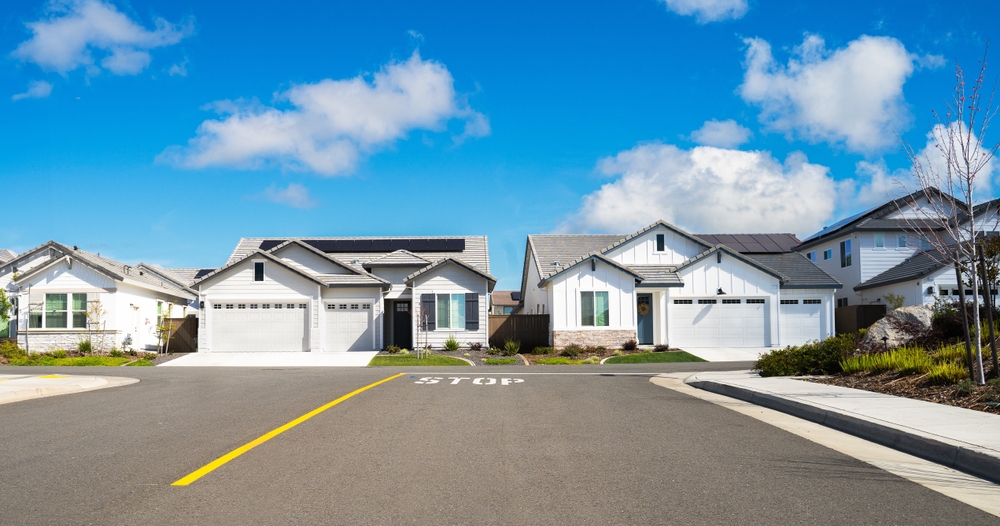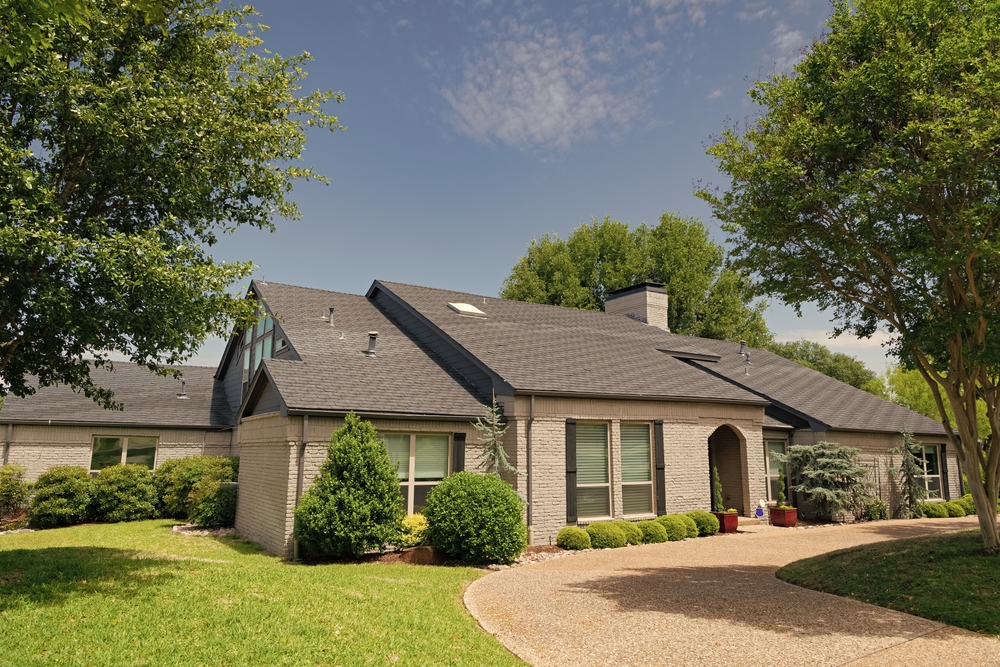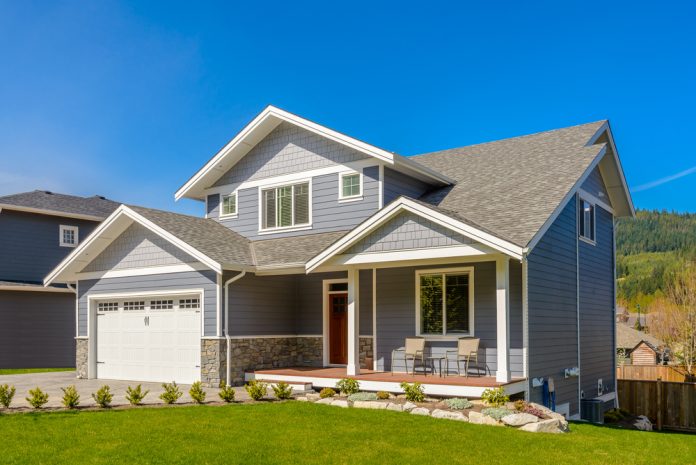In 2025, purchasing a starter home feels like an elusive dream for many Americans…
With skyrocketing home prices, mounting student loan debt, and high mortgage rates, the dream of owning a home is slipping further away for some first-time buyers. And for those who do manage to scrape together enough for a down payment, the cost of borrowing has made homeownership increasingly out of reach. In fact, it’s a growing problem that could leave future generations locked out of one of the most important ways to build wealth: owning property.
While the challenges are complex and vary depending on location and personal circumstances, there are clear reasons why many Americans simply cannot afford a starter home in 2025. From a shortage of affordable inventory to the burden of high mortgage rates, let’s dive into the factors preventing many prospective homebuyers from entering the market.
The High Cost of Buying a Home
One of the most obvious barriers to homeownership is the sheer cost of buying a home. For many potential first-time buyers, the numbers simply don’t add up. According to a mid-2024 report by Fortune, a first-time buyer now needs to earn nearly $80,000 per year to afford an entry-level home. Yet, nearly half of all U.S. households earn significantly less than this threshold, creating a major affordability gap. Even with steady jobs and good credit, many people are still locked out of the housing market.
This affordability crisis isn’t just a matter of inflation; it’s a result of wages failing to keep up with the dramatic rise in home prices over the past decade. In many areas, the median home price has more than doubled in recent years, far outpacing wage growth. Even traditionally affordable cities have seen home prices surge, with a large number of buyers now forced to pay much more than they can afford.
This growing gap between wages and home prices leaves many would-be buyers struggling to catch up. It’s not just about wanting to own a home anymore—it’s about simply being able to live in the area where you work and raise a family. For many, the dream of homeownership feels more like an unreachable aspiration than a real possibility.
Persistently High Mortgage Rates are Scaring Some Buyers Off
So, let’s say you find the perfect starter home, and your wages could theoretically support the purchase. That’s fantastic—until you see what your monthly payment will be. Enter the reality of high mortgage rates.
Over the past few years, interest rates have spiked, making monthly mortgage payments far more expensive. Even with a down payment and a reasonable home price, the combination of high borrowing costs and rising home prices has pushed many first-time buyers out of the market altogether.
For instance, a typical mortgage in 2025 with a 30-year fixed rate could cost significantly more than it did just a few years ago, even for those with excellent credit. Many first-time buyers, especially younger people who are just starting their careers, find it hard to keep up with the cost of borrowing. As a result, many simply don’t qualify for mortgages at all, while others are forced to settle for homes that don’t meet their needs or expectations.
The rise in mortgage rates isn’t just a temporary issue either. It’s a long-term trend that has made homeownership increasingly difficult for the average American. As rates climb higher, the dream of buying a home continues to slip further out of reach, pushing many would-be buyers back into renting and creating long-term financial setbacks.
Stagnant Wages Aren’t Helping, Either
Even in the best of times, it’s a challenge for many Americans to save for a down payment and afford a mortgage, but when wages aren’t rising fast enough to keep up with rising home prices, it becomes even more difficult. As noted earlier, wages, particularly for entry-level and mid-level workers, have remained relatively stagnant, failing to keep pace with the increased cost of living—especially housing.
For first-time buyers, this creates a massive hurdle. Many of them are just starting their careers, often without the savings or credit history needed to secure a large loan. While some industries may offer higher wages, they remain the exception, not the rule. Most Americans still struggle with tight budgets and have very little disposable income left for savings after covering daily expenses.
With the average cost of living continuing to increase, young people, in particular, find themselves stuck in a cycle of renting, unable to save enough to make homeownership a reality. The difference between wages and home prices is simply too wide, creating a perfect storm of factors that keep many Americans from affording their first home.
Mounting Student Loan Debt Makes Buying a Home Difficult for Some
The financial burden of student loans is a major obstacle for many young potential homebuyers. According to recent reports, nearly 45 million Americans carry student loan debt, totaling over $1.7 trillion. For young adults trying to buy a home, this debt represents a significant barrier. 
Student loan debt affects more than just one’s ability to save for a down payment; it impacts credit scores, debt-to-income ratios, and the ability to secure a favorable mortgage rate. This means that even those with a stable income and good credit history may struggle to qualify for a home loan because their monthly debt payments are already too high.
Many young people are also grappling with the challenge of rising rent prices, which often consume a large portion of their monthly budget. This leaves little room for saving for a down payment, further delaying the possibility of homeownership. For many, student loan debt has become a major financial burden that not only hinders their ability to buy a home but also holds them back from building long-term wealth.
The Lack of Affordable Inventory Means There Aren’t Many Starter Homes to Buy
The shortage of affordable housing inventory is another significant issue facing potential homebuyers. Over the past few years, the number of entry-level homes available for sale has reached a historic low, exacerbating the already tough housing market. This shortage is a result of several factors, most notably the increasing shift in focus by homebuilders toward larger, more expensive homes.
With rising construction costs, zoning laws, and regulatory expenses, many builders have found it more profitable to construct larger homes for higher prices. This has led to a drastic reduction in the number of smaller, budget-friendly homes being built. Meanwhile, the number of homes being flipped by corporate investors—often priced well above entry-level rates—has further reduced the number of affordable homes available for first-time buyers. So, where fixer-uppers used to be a great way for people to get a foothold in the market, those homes are now being flipped at a breakneck pace.
In many markets, especially urban centers, buyers face fierce competition from all-cash offers made by real estate investors. These buyers often beat out individual buyers who require financing, further driving up home prices and squeezing out those who might otherwise have been able to afford a home.
Inflation and Rising Cost of Living Make Home-Buying Out of Reach for Some Buyers
Inflation has made the everyday cost of living far more expensive, which directly impacts Americans’ ability to save for a home. With higher prices for groceries, gas, healthcare, and other essentials, many potential homebuyers are finding it harder than ever to set aside money for a down payment. Even those with good jobs may find their disposable income stretched thin, leaving little to put toward saving for a home.
Rising rent prices are another key factor. In many cities, rent has skyrocketed, leaving renters with little to no room to save. This combination of higher living expenses and a lack of affordable housing inventory has pushed homeownership further out of reach for many Americans, especially those just starting out in their careers.
For young people in particular, the struggle to balance rent, living costs, and student loan payments leaves little opportunity for savings, pushing the dream of homeownership even further away.
What the Future Holds for Buying a Starter Home
The inability to afford a starter home in 2025 is a major challenge for many Americans. From rising home prices and high mortgage rates to stagnant wages and overwhelming student loan debt, the barriers to homeownership are becoming insurmountable for many would-be buyers. The lack of affordable inventory and the rising cost of living further exacerbate the problem, leaving millions of Americans unable to enter the housing market.
While the situation may seem bleak, there are solutions on the horizon. Increased construction of affordable homes, financial assistance programs for first-time buyers, and changes to zoning laws could all help bridge the affordability gap. However, these changes won’t come quickly. For now, it’s important to understand the challenges and explore alternative paths to homeownership, whether through relocating to more affordable areas or finding creative ways to pool resources with friends and family.
As we move forward, it’s clear that homeownership will continue to play a critical role in wealth-building. For those who can navigate these challenges, owning a home remains a powerful financial asset. But for those struggling to break into the market, it’s crucial to advocate for policies and solutions that will make the dream of homeownership a reality for more Americans in the future.


